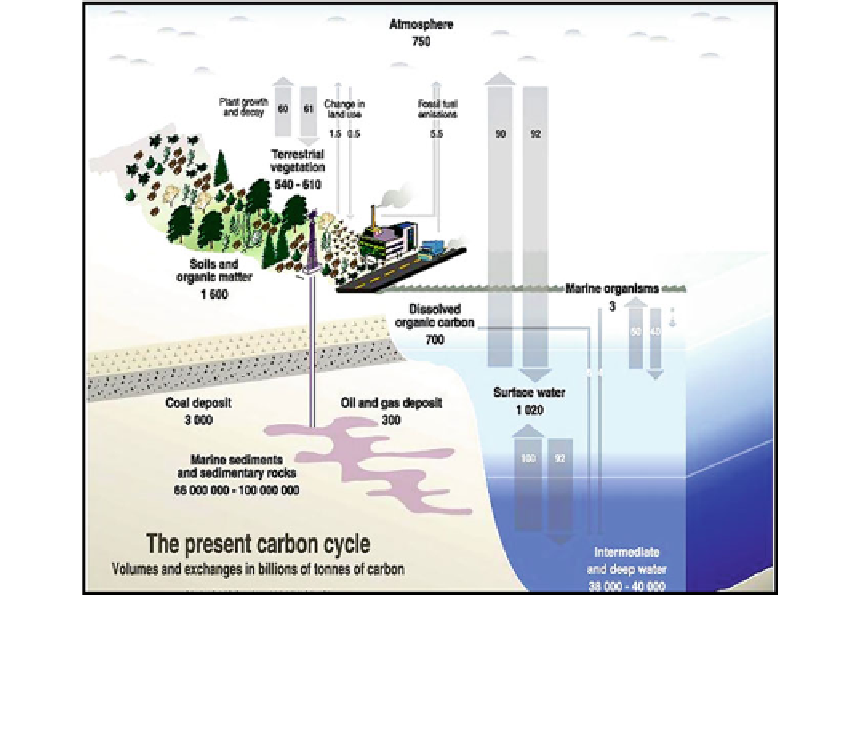Environmental Engineering Reference
In-Depth Information
Fig. 2.39
Carbon reservoirs and
fl
uxes.
Sources
of Climate Change, contribution of Working Group 1 to
the second assessment report of the Intergovernmental
Panel on Climate Change; UNEP and WMO, Cambridge
Press University, 1996;
www.un.org/earthwatch/about/
—
Center for climatic research, Institute for environmental
studies, University of Wisconsin at Madison; Okanagan
University College in Canada; World Watch, Novem-
ber
December, 1998; Climate Change, 1995; The Science
-
>10
6
year for kerogen in the sediment reservoir to
10
3
atmosphere and ocean over geological time. The
carbon cycle is completed by weathering of
uplifted marine shales or by combustion of fossil
fuels. Conversely, methanogens reduce carbon
dioxide anaerobically to form methane, which in
turn is used by comparatively few organisms.
Heterotrophs are also important players in the
carbon cycle, by generating carbon dioxide
through the activity of respiration. The process of
decomposition of plant materials (particularly
coastal litter generated from mangroves, salt
marsh, seagrass, seaweeds, etc.) also plays a major
role in completing the carbon cycle.
The
10
5
year for peats and soil carbon, to about
three years for atmospheric carbon dioxide and
less than one year for ocean biomass. Because of
its small size and relatively slow equilibration
with the ocean reservoir, the atmospheric carbon
reservoir is presently out of balance. The differ-
ence between atmospheric sources (deforestation
and combustion) and sinks annual atmospheric
increment and the difference between ocean in
-
fl
ux
of 1.8 Gt Cy
−
1
.
The major long-term sink for carbon is burial in
deep-sea sediments. This removal of a small
portion (0.1 %) of annual NPP is responsible for
oxygen in the Earth
and ef
fl
ux) is the
'
missing link
'
ow and exchange of carbon dioxide
between two types of vegetation in the marine and
estuarine environments is a unique feature of
marine carbon cycle. Seagrasses are closely asso-
ciated with mangrove habitats in many parts of the
fl
'
s atmosphere. Protection of
photosynthetically
xed organic carbon from
oxidation by photosynthetic oxygen (respiration)
has permitted accumulation of oxygen in the

